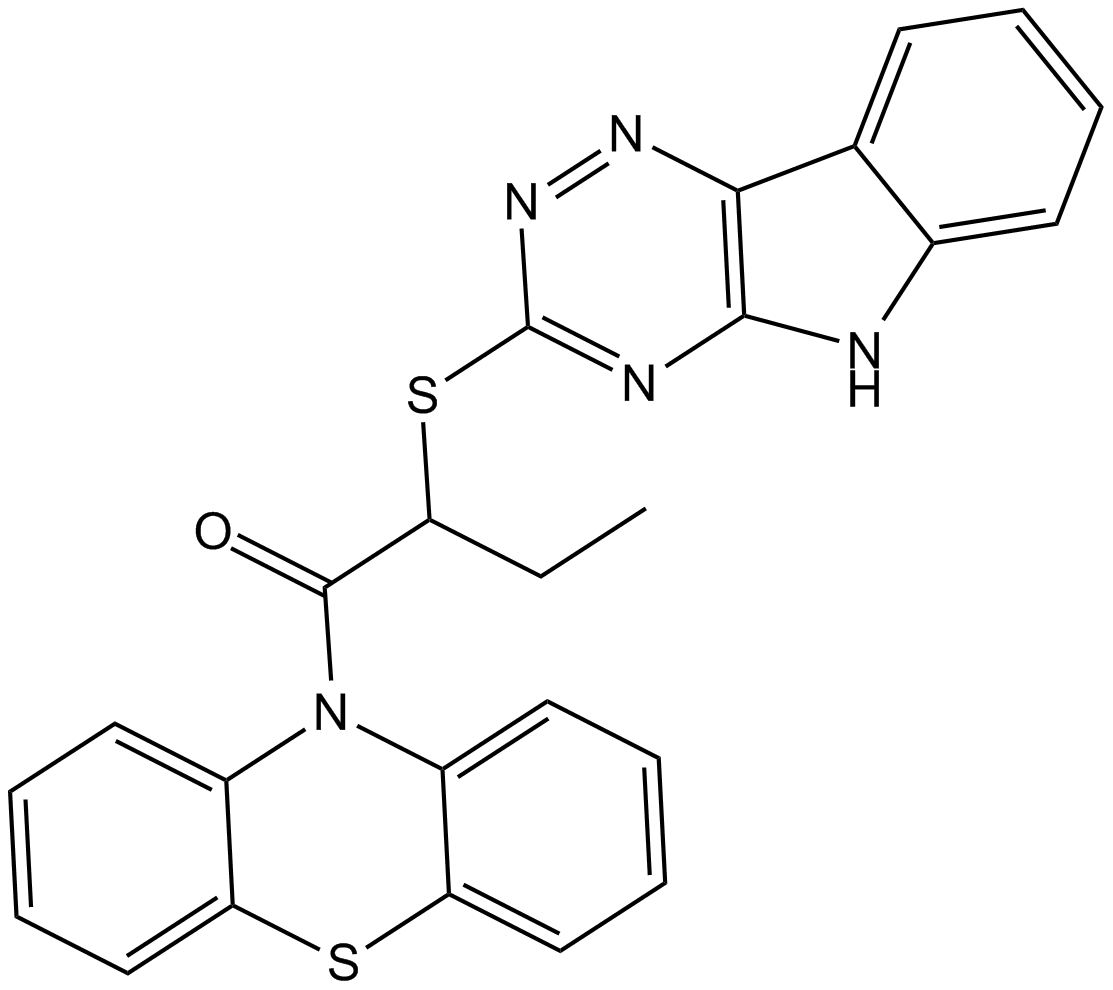Inauhzin (Synonyms: INZ) |
| Catalog No.GC14755 |
SIRT1 inhibitor
Products are for research use only. Not for human use. We do not sell to patients.

Cas No.: 309271-94-1
Sample solution is provided at 25 µL, 10mM.
Inauhzin is a small-molecule inhibitor of SIRT1 with IC50 value of 0.7-2μM [1].
Inauhzin inhibits SIRT1 deacetylation activity and subsequently activates the substrate of SIRT1, p53, in a dose-dependent manner. It shows an induction of acetylation of p53 and Histone H3 in the K382 and K9 residues, respectively. The inhibition of SIRT1 is selective. It has no significant effect on SIRT2, SIRT3 or HDAC8 in the Fluor-de-Lys fluorimetric assay. Since it is an activator of p53, inauhzin inhibits cell growth in different p53-containing human cancer cells including H460, H1299, A549, HT29 and WI38. The IC50 values are 5.4μM, 51.9μM, 3.2μM, 33.9μM and 85.4μM, respectively. Furthermore, inauhzin induces cell apoptosis through activating p53. In the xenograft tumours derived from H460 cells, inauhzin also significantly induces p53 activity and p53-dependent apoptosis at 2μM [1].
References:
[1] Zhang Q, Zeng SX, Zhang Y, Zhang Y, Ding D, Ye Q, Meroueh SO, Lu H. A small molecule Inauhzin inhibits SIRT1 activity and suppresses tumour growth through activation of p53. EMBO Mol Med. 2012 Apr;4(4):298-312.
Average Rating: 5 (Based on Reviews and 1 reference(s) in Google Scholar.)
GLPBIO products are for RESEARCH USE ONLY. Please make sure your review or question is research based.
Required fields are marked with *




















